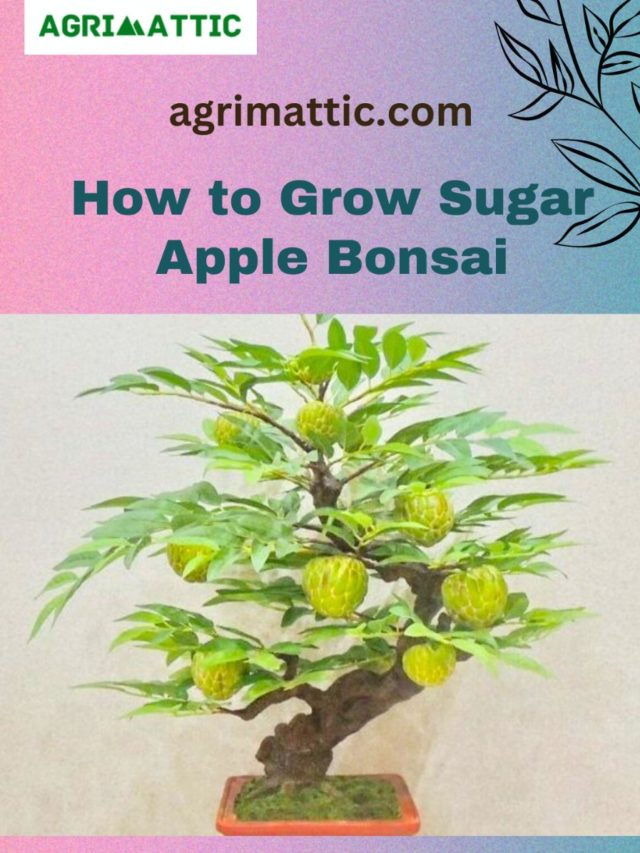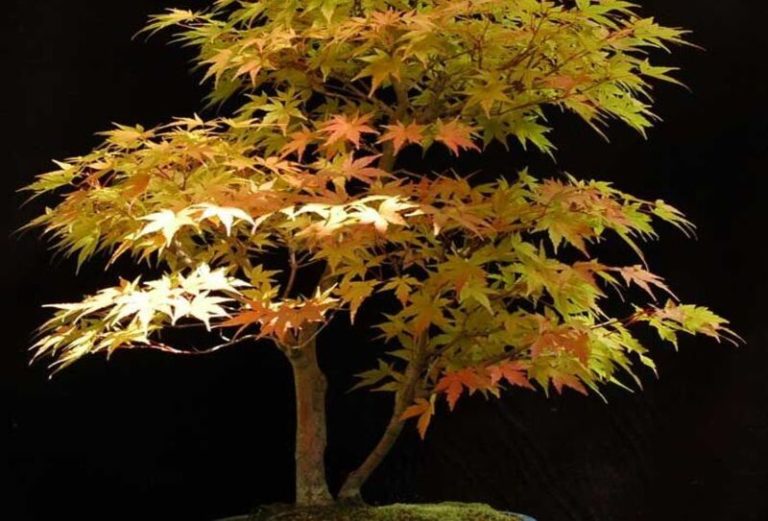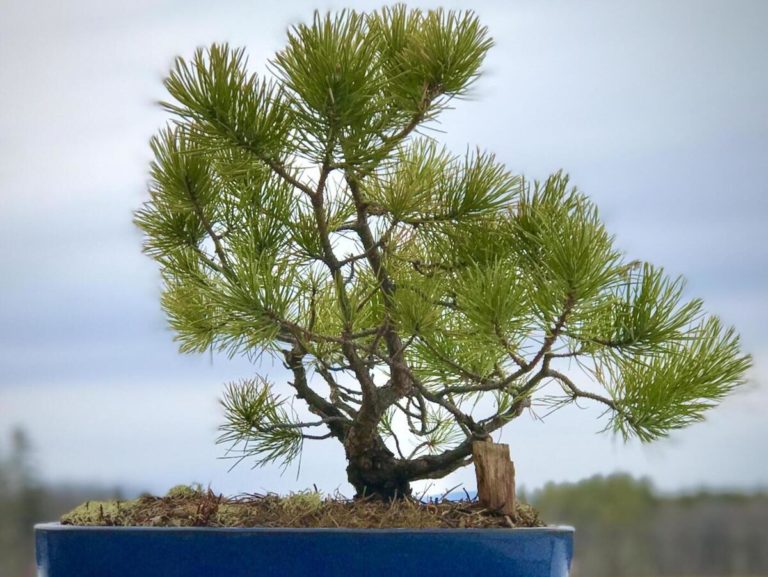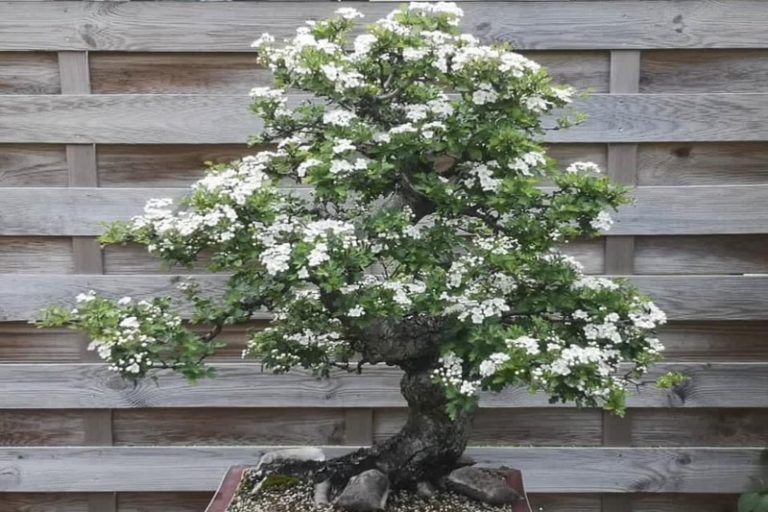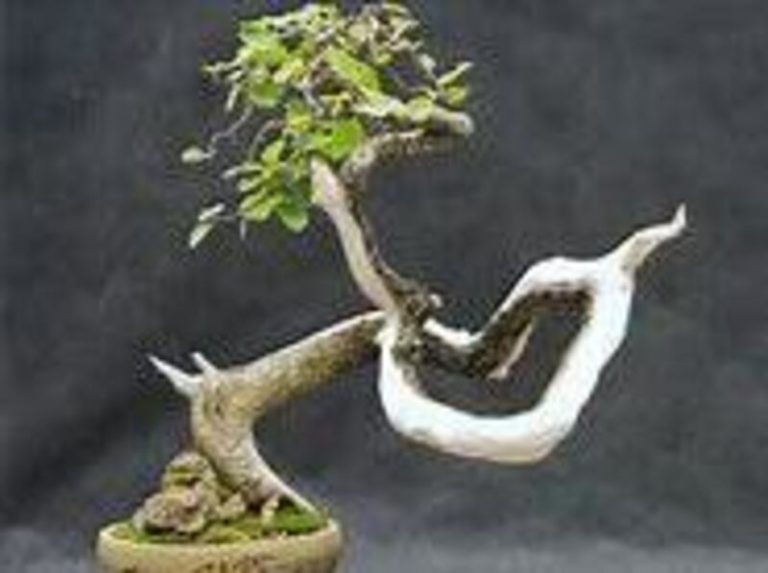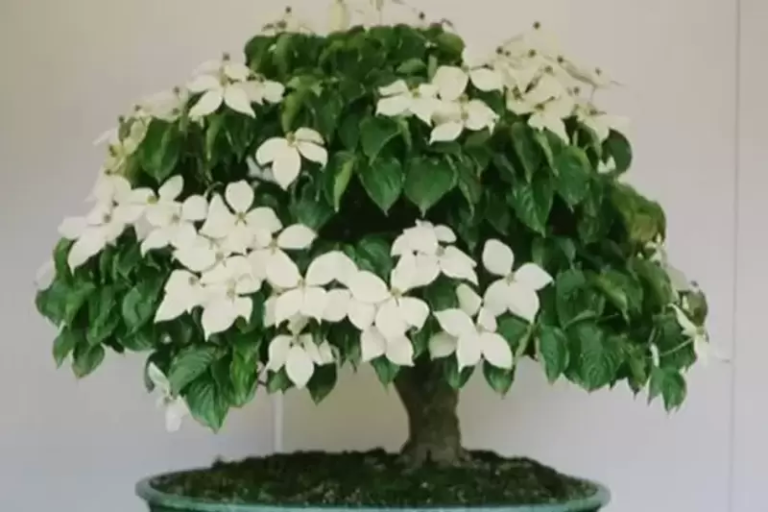Sugar Apple Bonsai: Growing Tiny Tropical Delights in Your Own Garden
The Sugar Apple Bonsai, which is also called Annona squamosa, is a cute little tree that draws in nature lovers with its beauty. Growing this tree can be fun and satisfying, especially for people who are just starting out. We’ll show you how to choose, care for, and enjoy your Sugar Apple Bonsai along the way in this guide.
What is Sugar Apple Bonsai?
Sugar Apple Bonsai is a small tree that is grown to look like a real Sugar Apple tree, but in a smaller size. It was made using bonsai methods, and its small size brings out its natural beauty. The Sugar Apple Bonsai comes from the warm Americas and is liked by bonsai fans for its pretty leaves, small fruits, and general charm. This bonsai needs to be carefully pruned, shaped, and trained, which makes it a fun and artistic hobby.
History and Origins of the Sugar Apple Bonsai
The background of the Sugar Apple Bonsai can be tracked back to China and Japan, which are also where the art of bonsai cultivation began. Bonsai is the art of growing small trees in pots. It has a long past that goes back more than a thousand years.
While it’s not clear where Sugar Apple Bonsai came from exactly, the art of bonsai as a whole has its roots in Chinese planting practices. Later, Japanese horticulturists took it up and made it better, and it became an important part of Japanese society.
The Sugar Apple tree, or Annona squamosa, is native to warm parts of the Americas, such as South America, Central America, and the Caribbean. This is where Sugar Apple Bonsai comes from. The fruit of this tree is very tasty; it has a sweet, custard-like inside and is grown in many warm and subtropical places around the world.
As the art of bonsai spread around the world over the ages, fans and gardeners tried making bonsai versions of different tree types, such as the Sugar Apple tree. With careful care in growing, pruning, and shaping, Sugar Apple Bonsai became a one-of-a-kind tiny tree that looks great and captures the spirit of the full-sized Sugar Apple tree in a small package.
Today, Sugar Apple Bonsai is still a popular choice among bonsai fans because it shows how nature, art, and gardening can work together beautifully. Even though no one knows for sure when Sugar Apple Bonsai came about, the skill and talent that goes into making them show both old practices and new ideas in the world of bonsai cultivation.
Sugar Apple Bonsai and Their Symbolism
As in the world of bonsai, each type of tree, even the Sugar Apple Bonsai, can have its own spiritual meanings. Different cultures and views may have different meanings for the Sugar Apple Bonsai, but like other bonsai plants, it can stand for a number of things:
1. Patience and Endurance:
Growing a bonsai, even a Sugar Apple Bonsai, is an art that takes a lot of care and patience. The tree’s slow growth is a metaphor for resilience, determination, and the benefits of working hard for a long time.
2. Harmony and Balance:
Bonsai, like Sugar Apple Bonsai, is a great example of how unity and balance work in nature. The careful shape and trimming of the tree show how people can work with nature to make things work together.
3. Serenity and Tranquility:
When put in calm and peaceful places, bonsai trees make people feel calm and peaceful. With its delicate leaves and small fruits, the Sugar Apple Bonsai adds to the general calm and balance of a room.
4. Reflection of Nature:
People often think of bonsai trees as small versions of real trees. Sugar Apple Bonsai, which looks like a small version of a full-grown Sugar Apple tree, shows us the beauty and wonder of nature and makes us think about how we fit into the bigger picture.
Making art and being creative:
5. Artistry and Creativity:
Taking care of bonsai trees, like Sugar Apple Bonsai, is an art form. It stands for human imagination, skill, and the power to change living things into forms that are beautiful and orderly.
6. Longevity and Connection to Heritage:
Bonsai trees are known for living a long time, and they are often passed down from one generation to the next as a way to connect with one’s history and the family’s lasting memory.
Ability to adapt:
7. Adaptability:
Bonsai trees, like the Sugar Apple Bonsai, show how nature can change to fit different situations. This stands for toughness, adaptability, and the ability to do well even in tough situations.
It’s important to keep in mind that the meanings of Sugar Apple Bonsai and other bonsai trees can be very personal and may be different for each person and society. In the end, what a Sugar Apple Bonsai tree means to its owner depends on their views, values, and life events.
Characteristics of the Sugar Apple Bonsai
Sugar Apple Bonsai is a cute little tree that looks a lot like the real Sugar Apple tree (Annona squamosa). It has a few unique qualities that make it a popular choice among bonsai fans. These are the most important things about Sugar Apple Bonsai:
- Small Size: Sugar Apple Bonsai is very small, just like its name says. Because it is small, it can be grown in pots, which makes it perfect for places inside and outside that don’t have a lot of space.
- Delicate Leaves: The bonsai has thin, shiny green leaves that look like the leaves on a real Sugar Apple tree. The shape of these leaves is usually oval or circular, and they make the bonsai look better.
- Miniature Fruits: There are times when Sugar Apple Bonsai will produce tiny fruits that look like real Sugar Apple fruits but are much smaller. These tiny fruits make the bonsai look more realistic and charming.
- Interesting Bark and Trunk: As the Sugar Apple Bonsai grows older, its bark changes colors and textures, going from smooth to rough, which makes it look better. Careful care during growth can make the bonsai’s stem thicker over time.
- Seasonal Changes: Like its bigger cousin, the Sugar Apple Bonsai may change with the seasons. During flowering seasons, it may produce small, fragrant flowers that add to its beauty and appeal.
- Pruning and Shaping: One thing that makes Sugar Apple Bonsai stand out is how carefully it is trimmed and made. Bonsai fans use methods like pruning and wiring to make a tree structure that looks good, with a clear top and well-balanced branches.
- Indoor and Outdoor Adaptability: Depending on the weather and the plant’s care needs, Sugar Apple Bonsai can be grown indoors or outdoors. It does best in warm tropical to subtropical climes and can be grown anywhere in the world that has the right conditions.
- Symbolic Significance: Like other bonsai plants, the Sugar Apple Bonsai has meanings like patience, harmony, and artistic expression. This makes it a popular choice for people who love the art and theory of bonsai gardening.
The distinctive and engaging qualities of Sugar Apple Bonsai, when combined with diligent care and attentive maintenance, render it highly favored among aficionados and collectors of bonsai.
How to Grow Sugar Apple Bonsai
It can be fun and satisfying to grow a Sugar Apple Bonsai, but you have to pay close attention to what the tree needs. To grow a Sugar Apple Bonsai, follow these steps:
1. Pick the Healthy Tree:
- Pick a Sugar Apple tree that is young and looks strong and healthy.
- Roots that are well-developed, a strong body, and bright leaves are all good signs.
2: Pick the Right Container:
- Pick a bonsai pot that fits well and has good drainage holes to keep the soil from getting too wet.
- It’s important that the pot is both big enough to fit the roots and small enough to keep the bonsai’s small size.
3. Soil and Potting:
- Make sure the roots get enough air by using a bonsai soil mix that drains well.
- The Sugar Apple Bonsai should be repotted every two to three years to keep the soil fresh and help it grow well.
4. Light and Placement:
- Sugar Apple Bonsai needs a lot of sunlight to grow well.
- Put the tree somewhere that it can get full to partial sunshine. It grows best outside, but it can also do well indoors with enough light.
5. Watering:
- Keep the dirt moist, but not so wet that it can’t breathe.
- You should water the bonsai when the ground gets a little dry, and how often you do it should depend on the weather.
6. Pruning and Shaping:
- Regular pruning will help the Sugar Apple Bonsai keep its shape.
- Take off any growth that is dead, broken, or not needed.
- You can form the branches and base by wiring them, but be careful not to damage the tree.
7. Fertilizing:
- Use a balanced fertilizer during the growing season (spring and summer).
- Reduce or stop fertilizing during the dormant season (fall and winter).
8. Humidity:
- Keep the humidity level right, especially if you’re growing the bonsai inside.
- Putting bonsai trees in a group or using humidity trays can help make the air more wet.
9. Dealing with diseases and pests:
- Common problems, like leaves turning yellow, bugs, or diseases, should be tracked.
- Quickly fix problems with the right tools, whether they’re natural remedies or, if necessary, chemical ones.
10. Patience and Observation:
- Bonsai needs a lot of time to grow. Regularly check on the tree and make changes as needed.
- Have fun with the process and watch your Sugar Apple Bonsai grow over time.
By following these steps and making changes based on what your Sugar Apple Bonsai needs, you can grow a beautiful, healthy little tree that brings the outdoors into your home.
Displaying and Showcasing the Sugar Apple Bonsai
A beautiful Sugar Apple Bonsai deserves to be shown off. This is an art form in itself that makes the tree look better and lets you share its beauty with others. You can show off your Sugar Apple Bonsai in the following ways:
1. Choosing the Right Stand or Table:
- Pick out a stand or table that goes with the style of your Sugar Apple Bonsai.
- It’s important that the stand is strong and looks good so that your bonsai has a stable base.
2. Positioning the Bonsai:
- The bonsai should be placed at eye level so that it is easy to see and enjoy.
- Think about the tree’s natural viewing point, which will show off its best features.
3. Creating a Focal Point:
- Make your Sugar Apple Bonsai the center of attention in the yard or room.
- Use smart lights to draw attention to the tree and make a show that looks good.
4. Using Accent Pieces:
- To make your bonsai look better, add small rocks, figurines, or tiny scenes as accents that go with the theme.
- Make sure that these things don’t take away from the Sugar Apple Bonsai, which is the main draw.
5. Seasonal Themes:
- Adjust the display according to the seasons. For example, add miniature decorations during holidays or showcase the bonsai against fall foliage.
- Seasonal variations can enhance the overall visual impact of your display.
6. Grouping Bonsai:
- You might want to group your Sugar Apple Bonsai with other bonsai trees that look good together to make a pleasing design.
- Make sure that each tree in the group adds to the beauty of the show as a whole.
7. Rotation:
- Rotate your bonsai regularly to showcase different angles and perspectives.
- This allows viewers to appreciate the tree’s 360-degree beauty.
8. Showcasing Flowers and Fruits:
- When your Sugar Apple Bonsai is in flower or producing little fruits, place it in a prominent location.
- Emphasizing these inherent qualities gives the exhibit more realism and intrigue.
9. Using Bonsai Display Tables:
- Take into consideration unique bonsai display tables that will enhance your bonsai and offer a distinct area for admiration.
- In order to highlight the bonsai itself, these tables frequently feature a minimalistic style.
10. Regular Maintenance:
- Keep the display area clean and tidy.
- Prune and shape your Sugar Apple Bonsai regularly to maintain its desired form and overall health.
By keeping these display tips in mind, you can make your Sugar Apple Bonsai a stunning center point that shows off the artistry and beauty of this small tree.
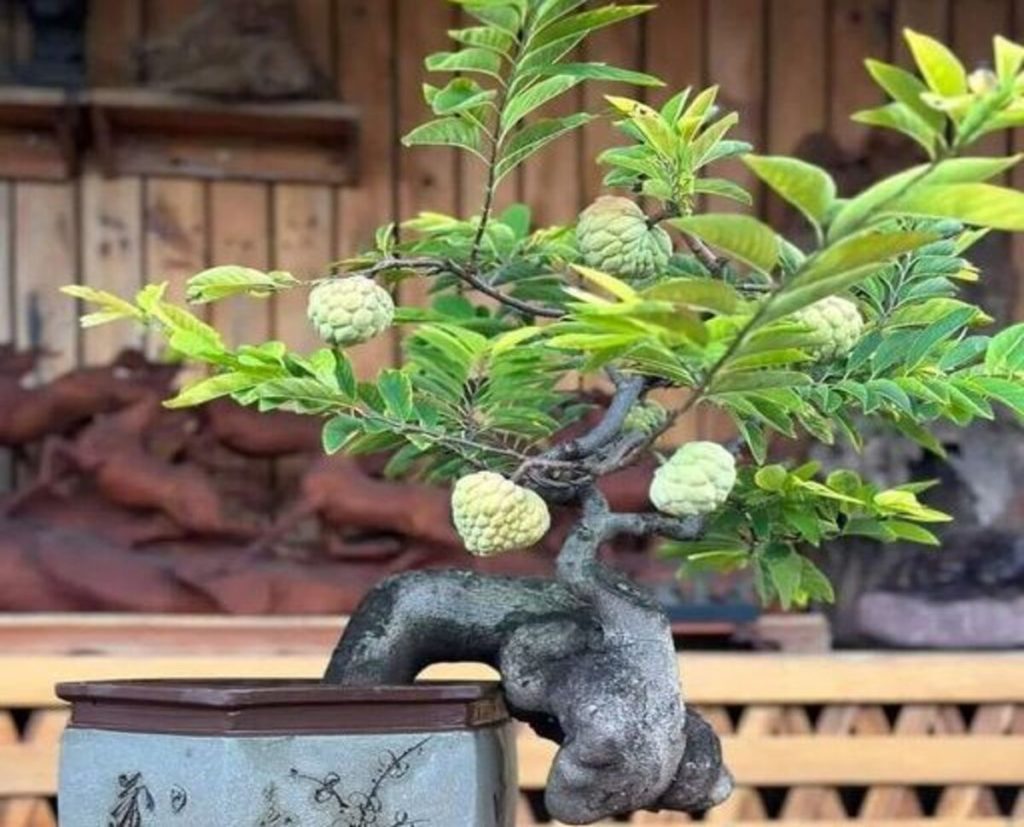
How to Care for and Maintain a Sugar Apple Bonsai
Taking care of and keeping a Sugar Apple Bonsai means paying attention to its light, water, dirt, and pruning, among other things. Here is a complete guide on how to take care of and keep your Sugar Apple Bonsai in good shape:
- Light and Placement:
Sunlight: Full sun is best for Sugar Apple Bonsai. Put it somewhere that gets at least 6–8 hours of direct sunshine every day.
Indoor vs. Outdoor: You can grow Sugar Apple Bonsai indoors, but outdoor cultivation is preferable for optimal growth and fruiting.
- Watering:
Consistent Moisture: Make sure the dirt stays wet but not soaked. When the dirt feels a little dry, water it.
Avoid Drying Out: Sugar Apple Bonsai is easily hurt by drying out, so make sure to water it regularly, especially when it’s hot or dry outside.
- Soil and Potting:
Well-Draining Soil: Use a bonsai soil mix that drains well to keep the roots from getting too wet and to keep the soil from getting too heavy.
Repotting: Every two to three years, change the pot for the Sugar Apple Bonsai to keep the soil fresh and help it grow well.
- Pruning and Shaping:
Regular Pruning: To keep the bonsai in the shape you want, prune it often. Get rid of any growth that is dead, broken, or not needed.
Wiring: To make the branches and trunk, use wiring methods. Don’t put too much stress on the tree; be gentle.
- Fertilizing:
Balanced Fertilizer: To give plants the nutrients they need during the growing season (spring and summer), use a balanced fertilizer.
Seasonal Adjustments: Reduce or stop fertilizing during the dormant season (fall and winter).
- Humidity:
Maintain Adequate Humidity: Moderate to high humidity levels are good for Sugar Apple Bonsai. You could group bonsai trees together or use humidity trays to make the air more wet.
- Temperature:
Tropical Conditions: Sugar Apple Bonsai thrives in warm, tropical to subtropical conditions. Protect it from frost, as it is sensitive to cold temperatures.
- Disease and Pest Management:
Regular Inspection: Check your bonsai regularly for signs of pests or diseases.
Natural and Chemical Control: If you need to use chemicals, talk to an expert or use natural treatments like neem oil or insecticidal soap.
- Seasonal Considerations:
Blooming Season: If your Sugar Apple Bonsai produces flowers, showcase it prominently during the blooming season.
Fruiting Season: Highlight the miniature fruits when they appear, adding authenticity to the display.
- Observation and Patience:
Regular Observation: Regularly observe your Sugar Apple Bonsai for changes in growth, health, or any signs of stress.
Patience: Bonsai cultivation requires patience. Enjoy the gradual development of your bonsai over time.
By following these care tips and making changes based on your Sugar Apple Bonsai’s needs, you can keep it healthy, beautiful, and long-lasting as a beloved small tree.
Sugar Apple Bonsai Care Sheet
| Aspect | Care Tips |
|---|---|
| Watering | Keep the soil consistently moist but not waterlogged. Water when the topsoil feels slightly dry. Adjust watering frequency based on environmental conditions. Avoid allowing the soil to dry out, especially during hot or dry periods. |
| Sunlight | Provide 6-8 hours of direct sunlight daily for optimal growth. Choose a location with full sunlight. Outdoor cultivation is preferable, but it can also be grown indoors with sufficient light. |
| Temperature | Thrives in warm, tropical to subtropical conditions. Protect from frost, as Sugar Apple Bonsai is sensitive to cold temperatures. |
| Humidity | Maintain moderate to high humidity levels. Group bonsai trees together or use humidity trays to increase humidity. |
| Fertilization | Use a balanced fertilizer during the growing season (spring and summer). Adjust fertilization frequency based on the bonsai’s growth and health. Reduce or stop fertilizing during the dormant season (fall and winter). |
| Pruning and Trimming | Prune regularly to maintain the desired shape. Remove dead, damaged, or unwanted growth. |
| Wiring and Styling | Use gentle wiring techniques for shaping branches and trunk. Avoid causing stress to the tree during wiring. |
| Repotting | Repot every 2-3 years to refresh the soil and encourage healthy growth. Choose a well-draining bonsai soil mix. – Ensure the pot has drainage holes. |
| Pest and Disease Control | Regularly inspect the bonsai for pests or diseases. Use natural remedies like neem oil or insecticidal soap. Consult with experts for chemical solutions if necessary. |
| Winter Care | Protect from frost and cold temperatures. Consider bringing indoors or providing additional insulation during winter. |
| Regular Maintenance | Observe the bonsai regularly for changes in growth or health. Practice patience in the gradual development of the bonsai. Enjoy the artistry and beauty of the Sugar Apple Bonsai. |
This care sheet has everything you need to know about taking care of a Sugar Apple Bonsai. It includes tips to help keep your little tree healthy and alive. You can make changes based on the circumstances and your bonsai’s unique needs.
Conclusion:
Planting Sugar Apple Bonsai is an amazing experience that lets you see nature on a smaller scale. Your bonsai will flourish and deliver happiness and a sense of accomplishment if given the proper care and attention. Savor the tranquil world of sugar apple bonsai farming while embracing the elegance and simplicity of this art form. Cheers to growth!
FAQ
Q: What is a Sugar Apple Bonsai?
A: A Sugar Apple Bonsai is a small tree grown using bonsai methods. It comes from a real Sugar Apple tree (Annona squamosa). Because of its pretty leaves and sometimes tiny fruits, it is grown for its looks.
Q: Can I grow Sugar Apple Bonsai indoors?
A: Sugar Apple Bonsai can be grown indoors, but it needs to get enough sunlight. For best growth and blooming, most plants do better when they are grown outside.
Q: How often should I water my Sugar Apple Bonsai?
A: When the top layer of dirt feels a little dry, water your Sugar Apple Bonsai. Make sure the soil always has the right amount of water; don’t let it dry out.
Q: What type of soil is best for Sugar Apple Bonsai?
A: Use a bonsai soil mix that drains well to keep the soil from getting too wet and to make sure the roots get enough air. Every two to three years, clean out the pot and repot the bonsai.
Q: When should I fertilize my Sugar Apple Bonsai?
A: Apply a well-balanced fertilizer throughout the spring and summer growing seasons. Adjust the frequency according to the health and development of the bonsai. Fertilization should be reduced or discontinued during the dormant season, which spans from autumn to winter.
Q: How do I shape and prune my Sugar Apple Bonsai?
A: Regular pruning will keep the tree in the shape you want by getting rid of dead, broken, or unwanted growth. To shape the branches and the trunk, use gentle wiring methods. When connecting, don’t put too much stress on the tree.
Q: Can Sugar Apple Bonsai produce fruit?
A: Yes, sugar apple bonsai can produce fruit, but the fruit size produce by bonsai tree will be smaller than the fruit produced by a full-sized tree.
Q: How do I protect my Sugar Apple Bonsai from pests and diseases?
A: Regularly check the bonsai for diseases or bugs. Consider using natural treatments like neem oil to kills bugs. If chemical treatments are needed, consult with experts.
Q: Can I display my Sugar Apple Bonsai indoors and outdoors?
A: Yes, you can put up a Sugar Apple Bonsai inside or outside. Make sure it gets enough sunlight, and if the weather is bad, you might want to bring it inside.
Q: How do I care for Sugar Apple Bonsai in winter?
A: Ensure the Sugar Apple Bonsai is protected from frost and low temperatures. During the winter months, consider bringing it indoors or providing additional insulation. Adjust the frequency of watering based on the tree’s dormant state.
Also Read:


